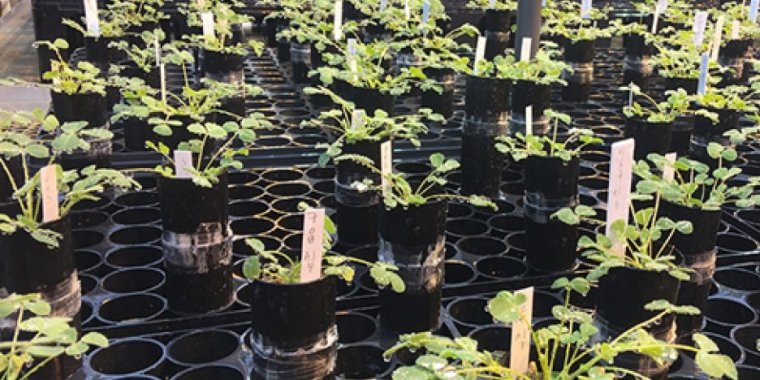| News / Science News |
Understanding cooperation and conflict in plant symbionts
The traditional idea of symbiosis — long-term interactions between two organisms — is that the participants mutually benefit each other. However, researchers have debated whether the interests of the symbionts always line up with the hosts they inhabit, or whether genes that benefit symbionts might come at the expense of their hosts. A new study by scientists at the University of Illinois Urbana-Champaign investigates this question through genomic sequencing and by infecting plant hosts with their microbial symbionts.

In a new study, Medicago truncatula plants were infected with Sinorhizobium meliloti. Photo: Rebecca Batstone
"This research nicely leverages genomics to understand long-standing questions in the evolution of symbiosis between plants and their microbes, while providing new insights into the mechanisms underlying interspecies cooperation," said Courtney Jahn, a program director in NSF’s Division of Integrative Organismal Systems.
Crop health and our own health are governed by the microbes we interact with, according to Katy Heath of U of I. "In agriculture, for example, there's a big movement to try to engineer microbes to make happier plants.
Our approach is a little different because we can measure all the genomic variations in a natural population of symbionts that have been interacting with their host for a long time to see what genes in nature are doing."
Added study co-author Rebecca Batstone, "There's an idea that microbes that interact with humans or plants are automatically beneficial because they have been living with them for a long period of time.
However, a lot of work has shown that the interests of the symbionts don't always align with that of the host they inhabit. We wanted to ask, at the genomic level, how much alignment there is between hosts and symbionts versus how much conflict."
In their study, the researchers examined 191 naturally occurring strains of the microbial symbiont Sinorhizobium meliloti, paired with its host Medicago truncatula, a clover-like plant that is native to the Mediterranean region.
The microbe resides in the root nodules of the plant and supplies it with nitrogen.
The group paired each microbial strain with an individual plant and used a mix of different strains to infect the same plant, a competitive situation that often occurs in nature.
"In our experiments, we measured how well the plant does with the particular microbial strain,” Batstone said. “In addition to measuring plant growth, we also looked at microbial fitness by counting the number of nodules that were packed with these microbes and measured the nodule size."
The researchers also sequenced the genomes of the microbial strains and, using a technique called genome-wide association, were able to compare which bacterial genes are associated with plant growth.
"If there is an association, for example one gene of interest is strongly associated with plant growth, then it's indicative that the gene might be important for controlling that trait," Batstone said.
When they compared how many symbiont genes align with the host's interest, the researchers found that almost 80% of the genes that they identified seemed to be associated with alignment.
"This is a striking result,” Batstone said, "because it shows that even though the symbionts are not evolving in order to benefit their hosts, it often pays for them to be beneficial." (U.S. National Science Foundation)
YOU MAY ALSO LIKE





